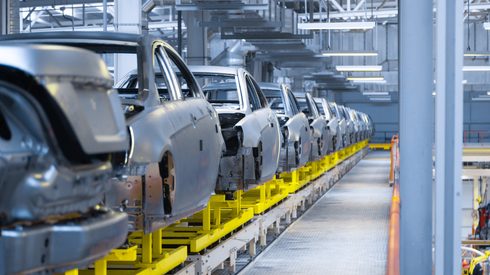The second episode of Fast Forward season two has motoring journalist and former Top Gear presenter Quentin Willson step up to the mic to share his insights on the future of electric vehicles (EVs). In this insightful discussion with host Andrea Hotter, Willson shares his experiences driving EVs and debunking some of the myths surrounding their functionality.
Key takeaways
- Misconceptions about EVs (e.g. mineral shortages, fire risks, range anxiety) are outdated due to tech and infrastructure advances
- China dominates the EV market, while US and Europe lag due to policy and infrastructure issues
- Government incentives drive EV adoption, but US political resistance risks slowing progress
- Battery innovations (e.g. LFP, solid-state) promise safer, cheaper EVs, though China leads in production
- EVs are set to dominate by 2033, but infrastructure and political challenges remain
You can subscribe to Fast Forward wherever you get your podcasts.
Debunking EV myths
Willson address several misconceptions that often put potential customers off. These include:
- Environmental impact: Some critics claim EV production is worse for the environment than traditional cars. But multiple studies show EVs offset their initial carbon footprint in just 13,000 miles of driving
- Fire risk: While EV fires can be challenging to extinguish, they are far less likely to catch fire than combustion vehicles
- Range anxiety: Modern EV models offer ranges of 250-400+ miles. Charging infrastructure still needs improvement, but current advancements are rapidly addressing this concern
Despite the need for growing infrastructure, Willson said it’s unlikely you’ll experience a dead battery. “In my hundreds of thousands of miles in an EV, I’ve never, ever run out,” he said.
In addition, Willson said fears of resource shortages, like lithium and cobalt, are exaggerated. New battery technologies are using fewer of these materials. For example, Willson said, “there’ll come a time when we won’t have cobalt in batteries at all.”
Global EV adoption trends
China leads in EV adoption, with nearly half its vehicles now electric, thanks to strong investments in supply chains, battery tech and infrastructure. Companies like BYD are producing affordable, competitive models.
The US and Europe lag behind, held back by inconsistent policies, weak infrastructure and a focus on luxury EVs. Last year, EVs made up just 8% of US car sales, with 7% growth.
Emerging economies like India and African nations struggle with limited infrastructure. Willson suggested solar-powered stations as a solution, saying, “Why would you necessarily rely on a grid connection when you could have mega pack batteries fed by solar or renewables to generate power to charge the car?”
Policy and political will
Governments play a key role in boosting EV adoption through policies like tax incentives and mandates. Willson said, “We saw in Germany, as soon as the intensity disappears, the amount of EVs being sold slows down, and they’re reinstating those.” These measures have lowered production costs and made second-hand EVs more affordable.
However, political resistance poses challenges for the future of electric vehicles, especially in the US, where EV tax credits from the Biden era are being reversed. Willson said that Trump’s protectionist stance could isolate the US auto industry from global electrification trends.
Meanwhile, countries like France and China show how strong political will can tackle issues like infrastructure and supply chains quickly. “We’ve got lots of EVs in Europe, lots of EVs in the UK, lots of EVs in China,” Quentin said. “If America is just trying to defend its legacy auto like this, there’s going to come a time when they become uncompetitive.”
Battery technology and supply chains
Advances in battery technology remain the bedrock of the future of electric vehicles. When it comes to battery gigafactories, while Europe and North America have made progress, they lag far behind China’s capacity and expertise.
“We haven’t had the political will to be able to say we have to build these factories,” said Willson. “Because if we don’t, we will always be reliant on other countries. So, we’ve replaced one kind of energy independence issue with another kind of energy independence issue.”
The road ahead for EVs
The EV market has grown rapidly in 15 years, and Willson predicts electrification will dominate by 2033 if political and industry momentum continues. Advances in batteries and charging tech will ease consumer worries.
However, challenges like politicized green energy and pushback from vested interests could slow progress. Quentin argues EV infrastructure must be seen as essential as power grids or highways.
For sceptics, he shared an inspiring stat: 95% of EV owners wouldn’t go back to combustion cars due to reliability and cost savings. “Why would you not do this?” he asked.
Stay tuned for more insights on how the future of electric vehicles will evolve.
Subscribe to Fast Forward, your definitive podcast for the critical minerals and battery raw materials markets. Each episode, we’re diving headfirst into the latest trends, market buzz and game-changing technologies that are shaking up this ever-changing landscape.






